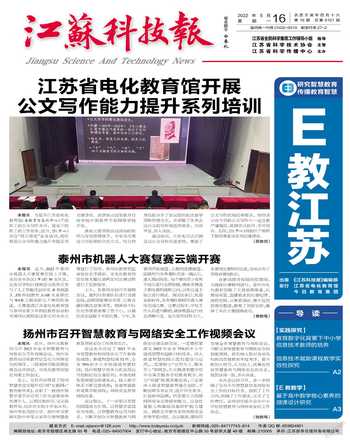Driving K-12 Innovation:2022 HURDLES + ACCELERATORS(Ⅲ)
譯题:基础教育创新驱动力报告——2022挑战篇+趋势篇(三)
Product by CoSN (The Consortium for School Network) 美国学校网络联合会
《基础教育创新驱动力报告》是继《地平线报告(基础教育版)》后推出的国际教育信息化发展的重要参考报告,报告发布方美国学校网络联合会(CoSN)为《地平线报告》发布方美国新媒体联盟的原有合作伙伴,致力于为基础教育及学前领域的教育技术从业者提供团队、知识和专业发展服务,助力创建和发展更有吸引力的学习环境。
HURDLES
DIGITAL EQUITY
Even though we’ve made strides this year in achieving Digital Equity globally, we are still only at the beginning of this journey — and achieving digital equity globally is an enormous challenge. In Montevideo, Uruguay, while students have their own devices, they don’t have the conditions to stay on track when it comes to virtual learning.
In the United States, the pandemic highlighted the access challenges faced by students within low-density rural areas and urban areas with higher poverty, including availability, affordability, and accessibility. Internet access, devices, apps, digital literacy, and more are required to improve digital equity in the United States.
The reality is that the COVID-19 pandemic will not be the last international crisis that the world faces and education systems need to be better prepared — digital equity is a must. “Schools have to remain agile and plan for any circumstance. There also needs to be renewed commitment to ensuring access to education and digital learning for the less resourced parts of the U.S. and the world, in general” (Lucy Gray, Lucy Gray Consulting, Illinois, U.S.).
TIPS & RECOMMENDATIONS FROM THE ADVISORY BOARD
GO BEYOND CONNECTIVITY TO DIGITAL EQUITY
While the spotlight currently shines bright on technical online connectivity, remember that digital equity is more than devices and connectivity and includes digital foundations, conditions for learning, and meaningful learning opportunities.
LET KNOWLEDGE IGNITE CHANGE
“The pandemic showed many of us what is possible with innovation and learning. It also showed us some of the most glaring concerns concerning equity and opportunity. What we do with that information will be key to our own growth — or will we race back to what ‘was’ simply to maintain comfort” (Ryan Cox, St. Cloud Area School District, Minnesota, U.S.).
LEVERAGE NEW OPPORTUNITIES
With expanding digital equity initiatives and funding opportunities catalyzed by the pandemic, this is a pivotal moment in which to improve digital equity. For students in the United States, there is promise with the Digital Equity Act — part of the Infrastructure Investment and Jobs Act — which plans to provide digital skills training and education to low-income populations, improve online accessibility of social services for individuals with disabilities, and empower rural communities to measure and address their own broadband needs.
COLLABORATE TO CLOSE THE DIGITAL DIVIDE
IT professionals need to reimagine cross -sector collaborations that cut across municipalities, schools, and hospitals because each of these stakeholders offers digital services that are dependent upon internet access. For example, can we use new models of solving internet access issues like offering Wi-Fi on buses and LTE networks?
ACCELERATOR
PERSONALIZATION
In a face-to-face classroom, it can be challenging to tailor education to meet the needs of individual children— and even more difficult to do so at scale. However, when the COVID-19 pandemic necessitated remote and hybrid learning in school systems around the world, educators used this opportunity to personalize learning, enabled by technology in these digital modalities.
TIPS & RECOMMENDATIONS FROM THE ADVISORY BOARD
BUILD OFF OF WHAT WE’VE LEARNED DURING THE PANDEMIC
“As educators, we need to transfer all the good we know about when and how and why students learn then integrate this educative capability within the connective capability of the technology tools. The question is how do we combat the inertia of returning to pre-existing practices once back in the classroom in order to leverage the best of both learning worlds — our expertise in pedagogy plus the mass availability of personally-owned devices?” (Karen Swift, James Nash High School, Queensland, Australia).
USE PEDAGOGY STRATEGIES TO PER-SONALIZE LEARNING
“To realize a vision for personalized learning, instructional practices should be targeted and relevant (i.e., differentiated, culturally responsive, adaptive, standards-aligned, etc.), actively engaging, socially connected, and growth-oriented. While personalization may manifest in different ways within different contexts, this constellation of strategies holds constant” (Beth Holland, Ed.D., The Learning Accelerator, National, U.S.).
EMBRACE ONLINE LEARNING RESOUR-CES TO PERSONALIZE EDUCATION
Consider using online learning resources as a way to personalize and individually pace learning. Whether students are learning in the classrooms or remotely, with 1∶1 devices educators can individualize the pace of learning for their students in ways that they never could before.
譯文
挑战
数字权益
尽管今年我们在全球范围内实现数字公平方面取得了长足的进步,但仍处于这一过程的初始阶段——在全球范围内实现数字公平是一个巨大的挑战。在乌拉圭的蒙得维的亚,虽然学生们拥有自己的设备,但在虚拟学习方面,他们没有条件保持正常接入。
在美国,这场疫情突出了低密度农村地区和贫困程度较高的城市地区的学生面临的入学挑战,包括可获得性、可负担性和可进入性。改善美国的数字公平需要互联网接入、设备、应用程序、数字素养等。
事实上,新冠肺炎疫情不会是世界面临的最后一次国际危机,教育系统需要更好的准备——数字权益是必须的。“学校必须保持灵活性,并针对任何情况进行规划。还需要重新承诺,确保美国和世界上资源匮乏的地区获得教育和数字学习。”(露西·格雷,美国伊利诺伊州露西·格雷咨询公司)
咨询委员会的提示和建议
超越数字权益
尽管目前人们聚焦的技术为在线连接,但需要注意的是,数字公平不仅仅是设备和连接,还包括数字基础、学习条件、有意义的学习机会等。
让知识点燃变革
“这场疫情向我们展示了创新和学习的可能性。它也向我们展示了关于公平和机会的担忧。我们如何利用这些信息将是我们自身发展的关键——或许我们会回到‘过去’,但如此能维持舒适的状态吗?”(瑞安·考克斯,美国明尼苏达州圣云区学区)
把握新机会
疫情推动数字公平倡议和融资机会的扩大,这是改善数字公平的关键时刻。对美国的学生来说,《数字公平法》是《基础设施投资和就业法案》的一部分,该法案有望为低收入人群提供数字技能培训和教育,改善残疾人在线获取社会服务的能力,并赋予农村地区衡量和解决自身宽带需求的能力。
合作弥合数字鸿沟
IT专业人士需要重新构想跨市政、学校和医院的跨部门合作,因为每个利益相关者都提供了依赖互联网接入的数字服务。例如我们能否使用新的模式来解决互联网接入问题,比如在公交车和LTE网络上提供无线网络。
趋势
个性化学习
在面对面的课堂中,为满足儿童个性化需求而量身定制的教育可能是一项挑战,而更难的是大规模做到这一点。然而,当因为新冠肺炎疫情流行需要在全球各地的学习系统中实行远程和混合学习时,教育者利用这个机会来实现个性化学习,通过应用这些数字技术使之成为现实。
咨询委员会的提示和建议
以我们在疫情期间學到的知识为基础
“作为教育者,我们需要将我们所知道的有利于学生何时、如何以及为什么学习的这种教育能力,整合转移到技术工具的连接能力中。问题是,我们如何克服回到课堂后自身对疫情前传统实践的惯性,以便充分利用两个学习领域的优势?这些优势包括我们在教育学方面的专业知识,以及个人拥有的大量电子设备。”(凯伦·斯威夫特,澳大利亚昆士兰州詹姆斯·纳什高中)
使用教学策略开展个性化学习
“为了实现个性化学习的愿景,教学实践应具有针对性和相关性(即差异化、文化响应性、适应性、标准一致性等),应积极参与,与社会相连,以成长为导向。虽然个性化可能在不同的环境中以不同的方式表现出来,但这些策略应保持不变。”(贝思·霍兰德,教育博士,《学习趋势》,美国国家出版社)
利用在线学习资源实现个性化教育
考虑使用在线学习资源作为个性化和自定步调学习的一种方法。无论学生是在教室里学习还是远程学习,通过一对一的设备,教育工作者可以实现先前难以做到的个性化学习支持。

